Bacillus subtilis is a species of bacteria that can survive in the soil for long periods. Many strains are highly effective at colonizing plant roots and controlling plant pathogens.
They can act directly against other microbes by producing a variety of antibiotics that affect fungi or bacteria. They can also act indirectly by stimulating the plant to activate its own defense mechanisms, so it can fend off attacking microbes.
This combination of activities results in a powerful biocontrol agent that is sold commercially to inhibit a number of pathogens on many different crops.
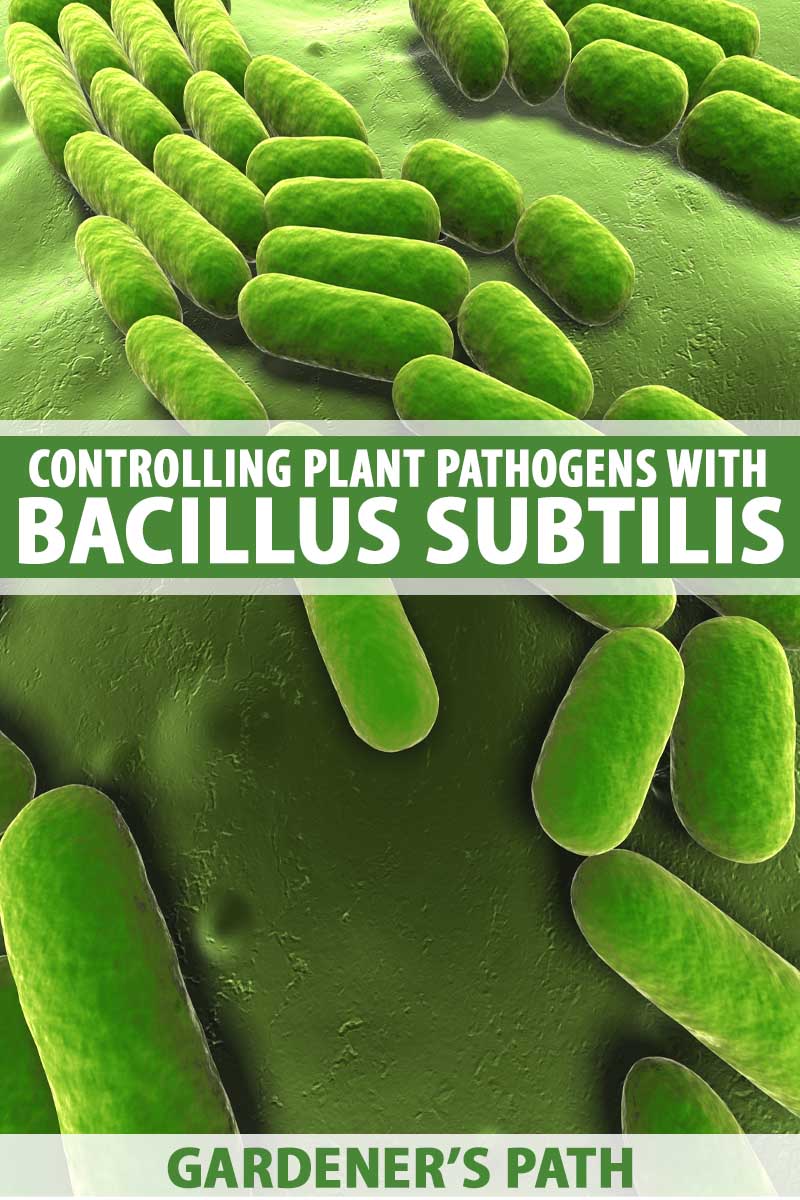
We link to vendors to help you find relevant products. If you buy from one of our links, we may earn a commission.
Even better – in addition to its biocontrol activities, B. subtilis helps the plants grow more effectively.
We at Gardener’s Path will explain how these bacteria work in detail and describe how to use them in your garden.
What You Will Learn
- Bacillus Survives Harsh Conditions in the Soil
- Colonization of the Roots
- Production of Antimicrobial Compounds
- Induction of Host Resistance
- Pathogens Controlled by Bacillus subtilis
- Microbial Cooperation That Benefit Plants
- Individual Strains Have Different Properties
- How to Use Bacillus subtilis
- This Soil Organism Controls Both Root and Foliar Pathogens
Bacillus Survives Harsh Conditions in the Soil
Many types of bacteria die out when the soil dries up and becomes unfavorable for their growth. In contrast, species of Bacillus produce spores that can survive for a long time and tolerate stressful conditions.
As soon as conditions improve, the spores germinate because of various environmental signals.
The ability of the bacteria to survive as spores makes it easier to produce formulations to use to treat plants. The bacteria are much more likely to survive for a long period when they are in the form of spores rather than as free-living bacteria.
After germination, the bacteria have specific sensors to guide them to plants, which they can then colonize. In addition to living on the roots, some strains of B. subtilis can also live within the plants and are known as endophytes.
Colonization of the Roots
The area in the soil right around roots can be a lush place for microbes. The roots secrete sugars and other compounds that microbes feed on. In exchange, these microbes help the plant by providing nutrients that would otherwise be in short supply.
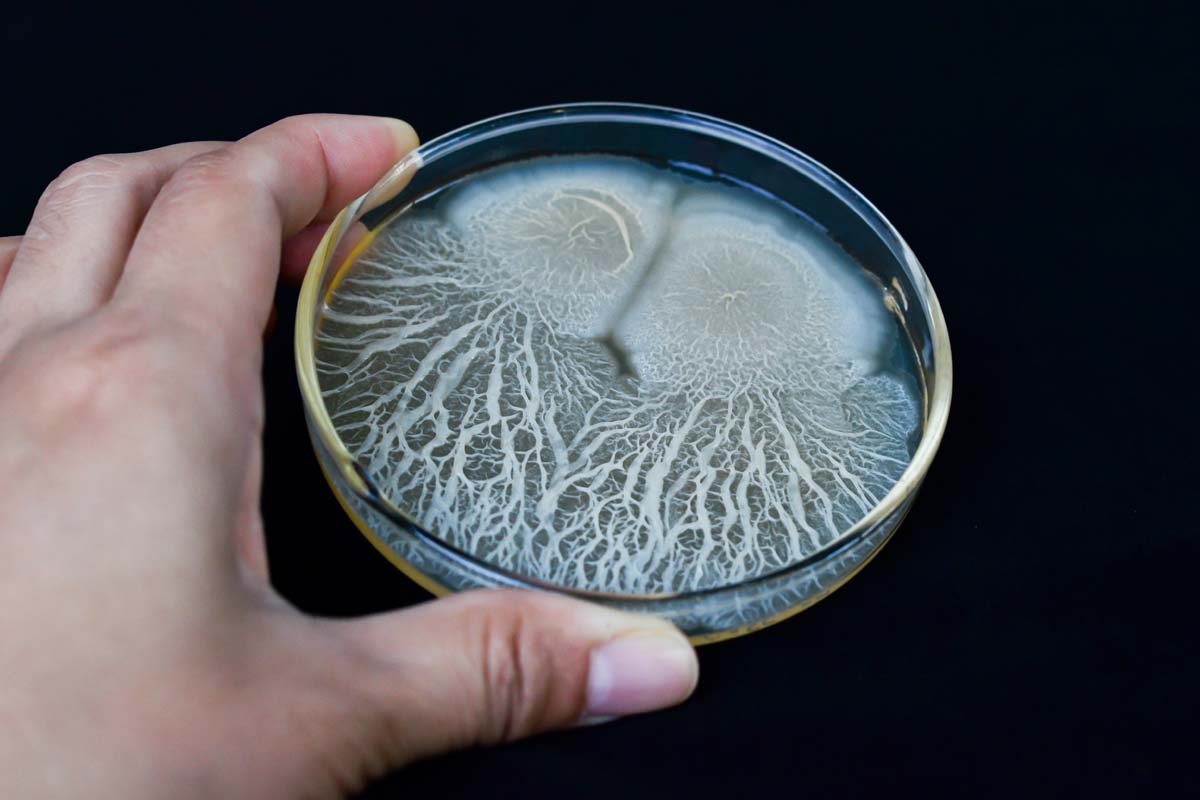
This area is called the rhizosphere. Species of Bacillus commonly live on the plant roots and promote plant growth to such a degree that they are part of a group of bacteria known as plant growth promoting rhizobacteria (PGPR). These bacteria are so important that they have their own acronym!
The bacteria form what is called a biofilm on the plant roots. This is a whole community of bacteria embedded in a matrix comprised of chemicals from the bacterial cells.
The location of the bacteria in the rhizosphere gives them a competitive advantage when it comes to fending off plant pathogens.
Production of Antimicrobial Compounds
Strains of B. subtilis produce a variety of antibiotics and other compounds that inhibit other microbes. More than 24 types of different antibiotics have been reported to be produced by various strains.
These bacteria produce unusual types of antibiotics known as lipopeptides. You may recognize the term lipo as having to do with fat. These antibiotics interact with the fungal cell membranes (made up of lipids) and create holes in them, killing the fungi in the process.
There are several types of lipopeptides, with one important group being the iturins. They are “considered as an excellent biopesticide.”
Iturin Ahas been found to exhibit antifungal activity against a variety of fungi and shown to be involved in the control of several plant diseases.
Another group of antibiotics is the fencygins, which inhibit both bacteria and fungi.
These bacteria can even inhibit the germination of fungal spores!
Induction of Host Resistance
In addition to attacking other microbes, B. subtilis can help prevent disease by activating the plants to respond to pathogens.
Plants have an active immune system and frequently respond to microbial threats by ramping up their defenses to fend off viruses, bacteria, fungi, or nematodes.
They can respond in several different ways, but a common type is known as systemic acquired resistance or SAR. Systemic means that the resistance is active throughout the plant.
B. subtilis has been shown to activate this kind of resistance in many different crops and to inhibit pathogens in this manner.
Pathogens Controlled by Bacillus subtilis
These bacteria directly control soil-borne fungal pathogens like Rhizoctonia, Phytophthora, Fusarium, and Sclerotinia. The SAR that they induce in the plant can control foliar pathogens, such as the fungal pathogens powdery mildew, Botrytis, and Sclerotinia and the bacterial pathogens Erwinia and Xanthomonas.
Microbial Cooperation That Benefit Plants
You are probably familiar with mychorrhizae – the fungi that live on plant roots and help them absorb nutrients. B. subtilis acts synergistically with a particular kind of mycorrhizae – arbuscular mycorrhizal (AM) fungi.
By doing so, these organisms help the plants obtain nutrients like phosphorus that are often unavailable to plants. The soil can be full of phosphorus, but if it is not in a form that is easily taken up by the plants, they can become deficient in this nutrient.
This ability means that B. subtilis helps plants even when it is not helping to protect them from pathogens.
Individual Strains Have Different Properties
With biofungicides like B. subtilis, everything is strain dependent. Different strains make different combinations of chemicals and vary in their ability to colonize plant roots and inhibit other microbes.
So, you cannot expect to add different strains and have them act in identical manners.
The formulations also affect how well the microbes survive after application and protect the plants.
Your best bet is to purchase an established brand that is comprised of one strain that has been used in a variety of crops and soil types.
CEASE Biological Fungicide is a good option, and it is available from Arbico Organics.
How to Use Bacillus subtilis
You can use CEASE on plants ranging from vegetables and fruit trees to roses and houseplants.
CEASE Biological Fungicide (Bacillus subtilis) via ARBICO Organics
While this microbe isn’t toxic to people or animals, it is theoretically possible to develop allergies to some of the proteins if you are continually exposed to large amounts. Therefore, you should wear a dust/mist filtering respirator if you plan on applying large quantities of CEASE.
You should apply CEASE at the first sign of the development of disease on the leaves of your plants. Then apply it every seven days.
If there is a lot of disease, you can increase the frequency of spraying to three-day intervals. You should also spray more frequently if your plants are really moist.
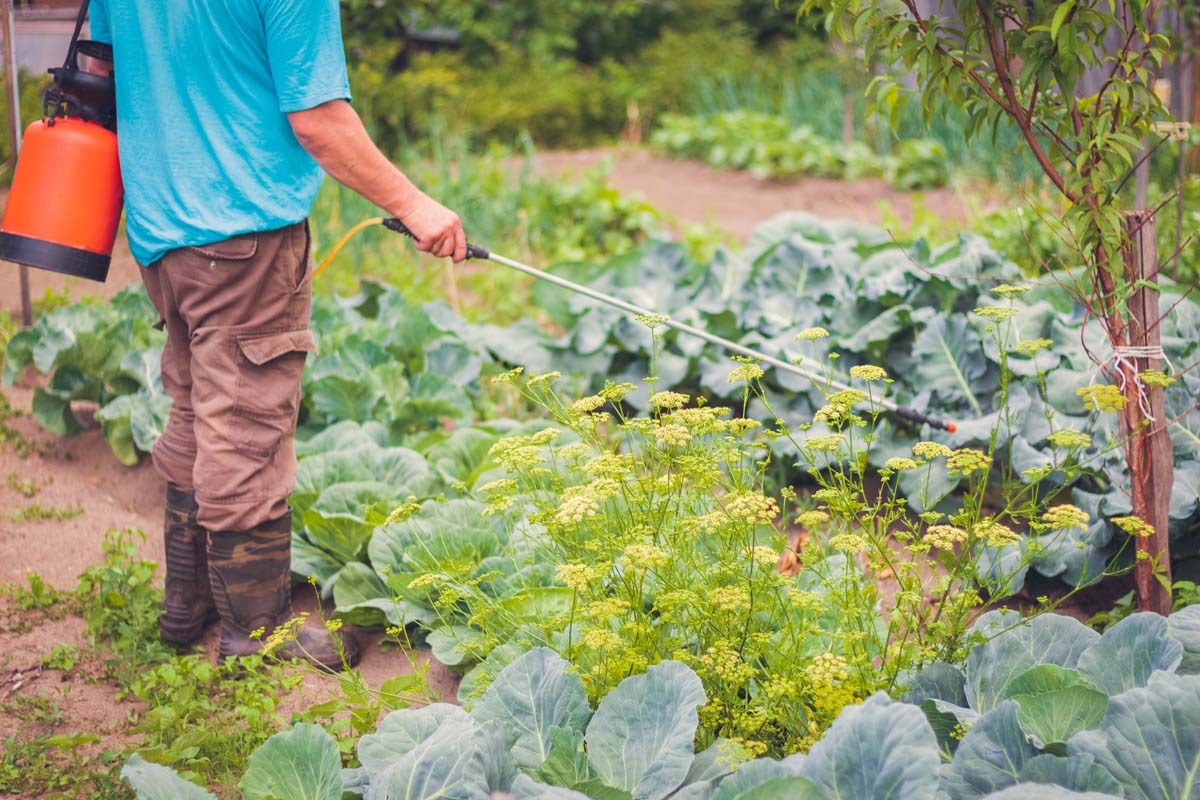
You can spray in the direct sun or at high temperatures, but don’t use it if you expect irrigation or rain within four hours of application.
CEASE can be used with some pesticides, but you will have to check ahead of time to make sure they are compatible.
And if you are operating a large organic farm or one that practices good Integrated Pest Management (IPM) practices, Arbico Organics also has a variety of Bacillus subtilis in various strains, application methods, and sizes.
This Soil Organism Controls Both Root and Foliar Pathogens
Bacillus subtilis colonizes plant roots and attacks soil-borne pathogens directly. It also stimulates the plants to activate their natural resistance, which can act to control foliar pathogens.
The ability of these bacteria to form spores is a major reason for their success in the soil, since they can just go dormant if conditions are unfavorable.
Different strains vary in their properties, but CEASE is widely available commercially to control diseases on a broad array of plants.
Have you used Bacillus subtilis in your garden? If so, let us know how it worked in the comments.
And read on for information on other biofungicides:
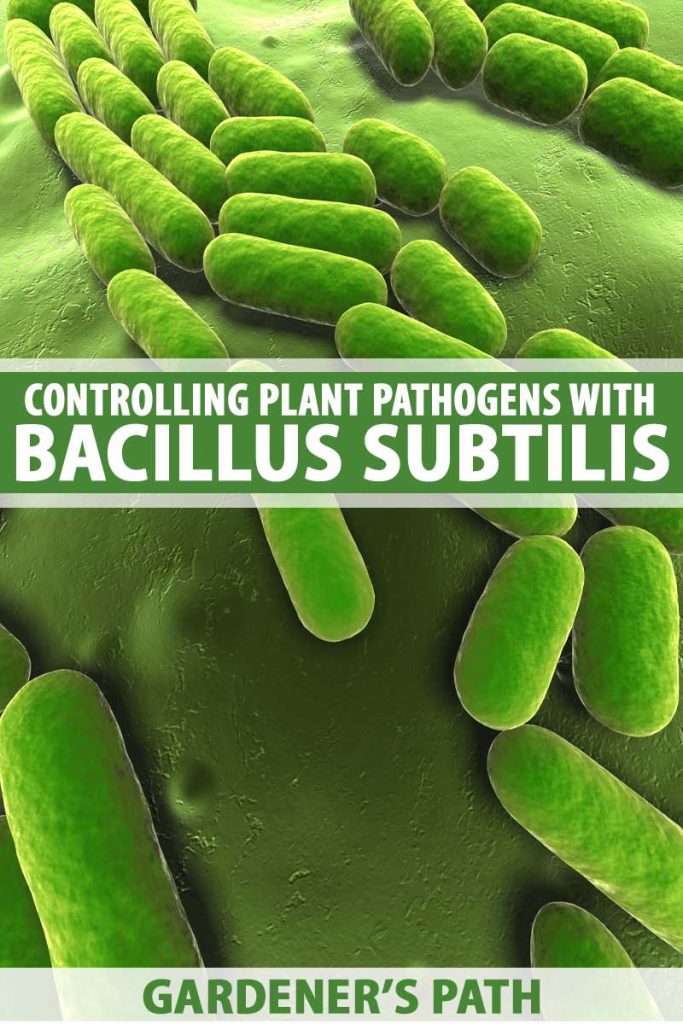
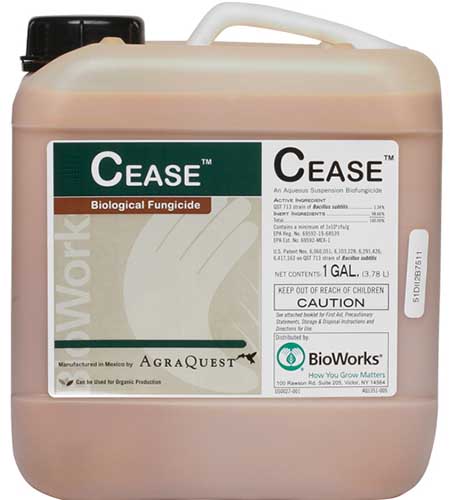
Hello to All: I recently made a Lactobacillus slurry from a recipe (https://blog.nutri-tech.com.au/diy-microbe-inoculum/) I also added via a probiotic capsule ( Chicory Inulin, Bacillus subtilis, Lactobacillus acidophilus, Lactobacillus plantarum, Lactobacillus paracasei, Bifodobacterium bifidum). My questions: 1. Did I go over board adding the capsuled stuff, and is it ok to use on my plants? 2. I had the concoction in an outdoor fridge, it got cold and the product was partially frozen (slushy). Is it still viable? 3. I’m planning on introducing a Mycorrizal inoculum : Glomus Intraradices, Glomus Mosseae, Glomus Aggregatum, Glomus Etunicatum, into the soil, and was wondering… Read more »
HI Alan, Thank you for your questions! 1) Was the capsule a probiotic for humans? Even if that was the case, it should be safe to use on plants, although it might not have any benefits. 2) I suspect that the concoction is no longer viable if it froze. 3) The research strongly indicates that you would be better off applying a single mycorrhizal species. Different species of Glomus compete with each other. And for arbuscular mycorrhizal fungi in general, “a single-species inoculum increased crop growth response on average by 41.2 % compared to a multi-species inoculum.” Best of luck… Read more »
Hello Helga, I need advice on how often to drench container grown tropical/subtropical fruit trees with Cease biofungicide. I’m planning to purchase Cease from Arbico-Organics. For 3 years I have been drenching my stock with Rootshield-Plus WP every two months using one teaspoon/gallon of water, at a rate of one quart of solution for a 5 gal container; I’ve observed reduced losses of trees, as well as increased growth rates! My plan is to evaluate adding B. subtilis biostimulant to my drenching program. Knowing the frequency of application for Cease is critical. I would like to look into any grower… Read more »
Hello Alex,
That is fantastic that you have increased growth rates with Rootshield-Plus WP! There is an extensive amount of literature on biocontrol agents, and I am not knowledgeable about information on Cease.
Arbico Organic’s website has the manufacturer’s information on rates to use.
They should be able to provide you with information on grower trials that we might not be aware of. I hope that combination will work well for you!
I have recently started using Rootshield Plus for my plants and am amazed at the effects. I am interested in how to reproduce these microorganisms on the farm given how expensive they are to purchase. Is this something that is feasible outside of a laboratory? Perhaps in a nutrient tea? Thank you Helga!
Hi Michael, That is wonderful that you are having great results with Rootshield! It might be theoretically possible to grow the microbes yourself. However, I would recommend against it. A major factor in whether a strain will be successful in the field is what additives are in the preparation. The same strain came behave quite differently when different compounds are present. A lot of work goes into that type of development, and I suspect that the combination of additives is proprietary. However, Bacillus species can usually survive for long periods, because they make spores. So they might stay in the… Read more »
Is the GB03 strain of Bacillus subtilis the same as the QST 713 strain?
Both of these strains are considered broad spectrum, and they’re able to effectively control a range of bacterial and fungal pathogens. These two strains are often recommended as suitable alternatives for each other, but be sure to read product labels carefully and select the best one for your purposes. QST 713 (often sold as Serenade) is indicated in treatment of blight, scab, gray mold, and certain types of mildew and wilt, as well as other diseases. GB03 (often sold as Cease) may be used to control diseases including damping off, powdery mildew, anthracnose, botrytis, gummy stem blight, and certain types… Read more »
Great article on controlling plant pathogens with the biofungicide Bacillus subtilis! It’s fascinating to learn about the potential of this naturally occurring bacteria to help protect crops from harmful pathogens. Bacillus subtilis works by colonizing the surface of the plant and competing with pathogenic bacteria and fungi for resources. This can help prevent the growth and spread of harmful pathogens, ultimately leading to healthier and more robust plants. One of the best things about Bacillus subtilis is that it is a natural and sustainable solution for controlling plant pathogens. It does not harm the environment or leave harmful residues on… Read more »
Hi. Last year, one batch of strawberries that I purchased had anthracnose. I am very afraid of it spreading throughout my raspberries, fruit trees, etc. How do I eradicate it? Will the Cease spray kill the anthracnose fungus? I have been using hydrogen peroxide in my strawberries but, I don’t think that is working. I need something to spray everything. Please tell me if anyone else had luck destroying this fungus, before it destroys everything I have. Thank you so much!
Several species of Colletotrichum fungi can cause anthracnose in strawberries, and the pathogens can overwinter in infected plants, fallen fruit, and plant debris. Any plant material showing signs of disease should be removed from the garden and destroyed to prevent further spread. The spores spread via splashing water during periods of warm, humid or rainy weather in spring and summer, and they can also be transported via people and tools. Using straw mulch and avoiding watering from overhead can help to prevent spread, and CEASE is one option that may be used to control anthracnose. Using hydrogen peroxide on berry… Read more »
Hello,
Which species would you recommend adding to a garden and where to buy them? I’m in Oregon. Also, which species would you recommend for cuttings to get them to root without any hormones?
Bacillus subtilis is associated with root growth, and various other species and strains have shown a positive effect on root growth in hardwood and semi-hardwood cuttings in lab studies, including Bacillus RC03 and B. simplex RC19 as well as B. cereus UPMLH24.
Are there specific types of fungal disease or pests that you want to address in the garden? I don’t know that I would recommend a one-size-fits-all approach. You can read about other species, including B. amyloliquefaciens and B. thuringiensis in our guides. Purchase information is included in these articles as well, and Arbico Organics is a good source.
Thank you for your reply, Allison.
That company has a ton of options. Is a particular product you would suggest please for rooting cuttings?
As far as pests, I have Aphids and fruit flies that I try to control.
Rooting with Bacillus rather than hormones isn’t something that I’ve tried myself, and there isn’t an industry-wide standard to date that I know of. Your best option may depend in part on the types of plants you hope to root, and you may wish to experiment with different species or strains- the ones I mentioned in my previous message to you have shown promise in lab studies. Are you referring to Drosophila fruit fly species, or something like fungus gnats? Spinosad may be a useful option to manage fruit flies. Gnat larvae often respond well to Steinonerma feltiae nematodes. Bacillus… Read more »